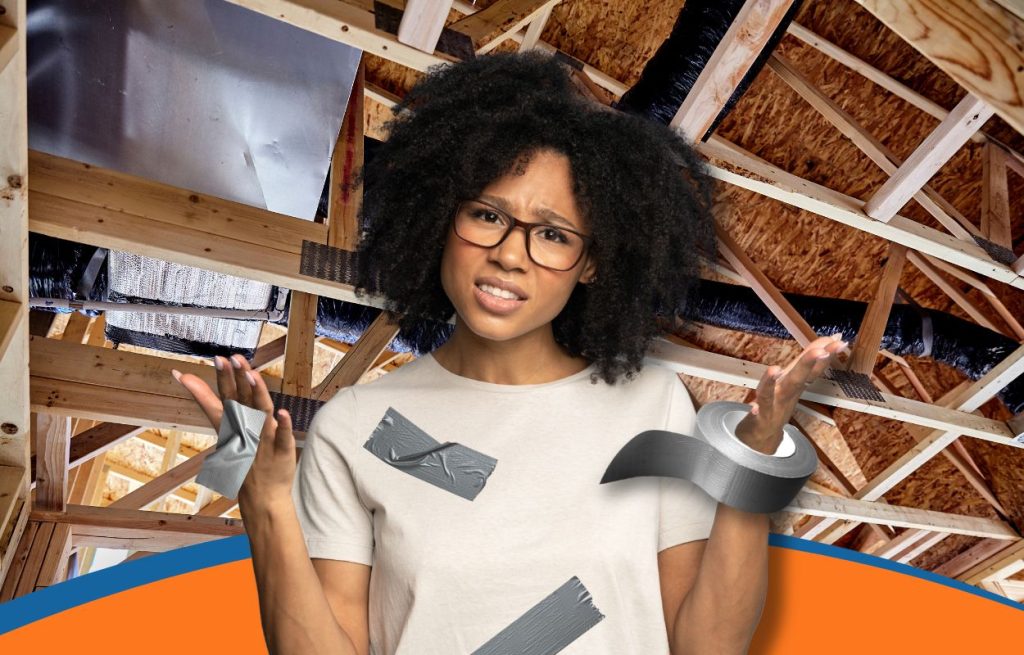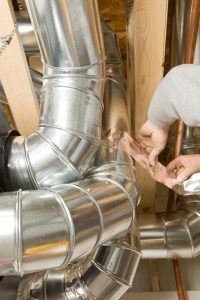Let’s talk about this phrase: It could do more harm than good. Sounds harmless enough, right? Kind of like a gentle warning. But when it comes to DIY duct repair in Wrightsville, GA, that phrase seriously underplays the risk.
The truth? Trying to patch up your ductwork on your own—especially with so-called “duct tape”—doesn’t just make things worse. It can be flat-out disastrous for your home’s comfort, your energy bills, and your HVAC system’s health.
Here’s why DIY duct repair is never the right call—and why calling in the professionals is always your smartest move.
What are the risks of DIY duct repair and why choose professionals instead?
- Duct tape deteriorates quickly, peeling away and gathering dust that restricts airflow
- Energy efficiency suffers when improperly sealed ducts leak conditioned air
- Uneven temperatures and discomfort result from poorly patched ductwork
- HVAC systems are stressed, reducing lifespan and increasing failure risk
- Indoor air quality worsens as dust, allergens, and mold infiltrate
- Safety and compliance risks occur if non-rated materials create hazards

Why Duct Tape Shouldn’t Be Used on Air Ducts
Yes, it’s called “duct tape.” But no—it should never actually be used to repair ductwork. Despite the name, standard duct tape breaks down quickly when exposed to the temperatures and airflow conditions found in your HVAC system. In fact, leaky air ducts are a major HVAC problem, and relying on duct tape only makes them worse over time.
What happens when you use duct tape on ducts?
- It peels away over time, leaving gaps.
- It collects dust and debris, which can restrict airflow.
- It creates false confidence—you think the issue is fixed when it’s actually getting worse.
If you’ve already slapped some duct tape over a hole or loose connection, don’t panic—but don’t leave it there. It’s a temporary band-aid at best and a long-term problem at worst.
Risks of DIY Air Duct Repairs for Your HVAC System
Your ductwork is a critical part of your HVAC system—it’s the network that delivers cooled or heated air to every room. When something goes wrong, DIY fixes can have serious consequences. Here’s what can (and often does) go wrong when homeowners try to take matters into their own hands:
1. Reduced Energy Efficiency
Improperly sealed or poorly repaired ducts leak conditioned air into attics, crawl spaces, or behind walls. That means your system has to work overtime to keep your home comfortable, driving up your energy bills month after month.
2. Uneven Temperatures
Have hot or cold spots in your house? That’s often a sign of duct leakage or blockages—problems that get worse with bad repairs. You might solve a draft in one room only to create discomfort in another.
3. Increased Strain on Your HVAC System
Leaky or restricted ducts make your AC or furnace work harder than necessary. Over time, this strain can cause breakdowns, reduce your system’s lifespan, and lead to expensive repair or replacement costs.
4. Indoor Air Quality Issues
Damaged ductwork can pull in dust, allergens, or even mold from unconditioned areas and circulate them throughout your home. If you try to seal ducts improperly, you may unknowingly worsen your indoor air quality. Many homeowners already struggle with spring allergies and poor indoor air quality, and leaky ducts only add to the problem.
5. Fire Hazards & Code Violations
Using the wrong materials—like flammable tapes or adhesives not rated for HVAC use—can pose a fire risk or put your system out of compliance with local building codes.
Benefits of Hiring Professionals for Air Duct Repairs
At Premier, we use industry-approved materials, tools, and diagnostic equipment to identify the true source of your duct problems and make lasting, safe repairs. We know where to look for common failures and how to fix them without creating new issues. We also ensure that your duct system is properly balanced—so every room gets the comfort it needs without overburdening your HVAC equipment. For healthier air on top of reliable airflow, we can also recommend the right air filter and purifier combination to suit your home’s needs.
If you’re thinking about fixing your ductwork yourself, do your home a favor—step away from the duct tape and give us a call. At Premier, we’re proud to serve the Sandersville community with reliable, professional HVAC solutions that protect your comfort and your investment.


